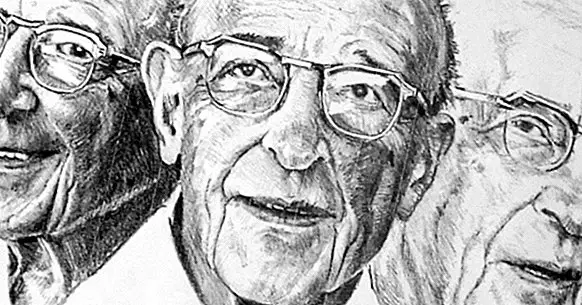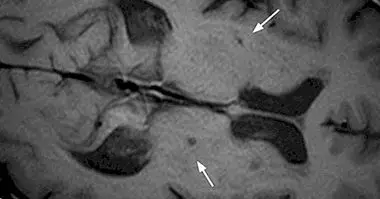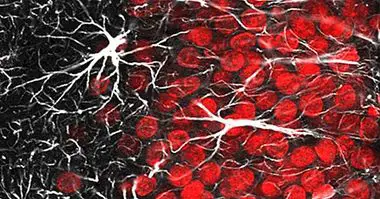Client-Centered Therapy by Carl Rogers
Current psychotherapy gives great importance to the relationship between the therapist and the client, which is considered as an equal that must be understood and respected. However, this was not always the case.
Carl Rogers and his client-centered therapy , or in the person, they marked a very significant turn in the conception of psychotherapy. In this article we will describe Rogers' therapy, as well as the author's analysis of the clinical process in general and the therapist's attitudes that allow the intervention to be successful.
- Related article: "30 sentences of Carl Rogers, the humanistic psychologist"
Carl Rogers and client-centered therapy
Client-centered therapy was developed by Carl Rogers in the 1940s and 1950s. His contributions were fundamental to the development of scientific psychotherapy as we know it today.
Rogers' work is framed in psychological humanism, a movement that claimed the goodness of human beings and their Innate tendency to personal growth against the colder and pessimistic perspectives of psychoanalysis and behaviorism. Rogers and Abraham Maslow are considered the pioneers of this theoretical orientation.
For Rogers the psychopathology is derived from the incongruity between the experience of the organism ("organismic self") and the self-concept, or sense of identity; thus, the symptoms appear when the behavior and the emotions are not coherent with the person's idea of herself.
Consequently, the therapy must focus on the client achieving this congruence. When it does, it can develop fully, being open to the experiences of the present and feeling confidence in its own organism.
Probably the most important contribution of Rogers was the identification of common factors that explain the success of different therapies . For this author - and for many others after him - the effectiveness of psychotherapy does not depend so much on the application of certain techniques as on passing through specific phases and the therapist's attitudes.
- Maybe you're interested: "Humanist Psychology: history, theory and basic principles"
Phases of therapy
From his research Rogers proposed a basic and flexible scheme of the psychotherapeutic process; to this day this model is still used, regardless of the theoretical orientation of the therapist , although each type of therapy can be focused on a specific stage.
Subsequently, authors such as Robert Carkhuff and Gerard Egan investigated Rogers' proposal and developed it. Let's see what are the three main phases of psychological therapy.
1. Catharsis
The word "catharsis" comes from classical Greece , where it was used to refer to the ability of tragedy to purify people by making them feel intense compassion and fear. Later, Freud and Breuer called their therapeutic technique "cathartic method", consisting in the expression of repressed emotions.
In this model, catharsis is the exploration of one's emotions and of the vital situation on the part of the client. Egan speaks of this phase as "identification and clarification of conflicting situations and untapped opportunities"; it is about that the person manages to focus the problem in order to solve it during the following stages.
Rogers' person centered therapy focuses on the catharsis phase: it promotes the personal development of the client so that later he can understand and solve his problems on his own.
2. Insight
"Insight" is an Anglo-Saxon term that can be translated as "Intuition", "introspection", "perception", "understanding" or "deepening", among other alternatives. In therapy, this term denotes a moment in which the client reinterprets their situation as a whole and perceives "the truth" - or at least becomes identified with a specific narrative.
In this phase the role of the client's personal goals is key ; according to Egan, in the second stage a new perspective is built and a commitment is generated with the new objectives. Psychoanalysis and psychodynamic therapy focus on the insight stage.
3. Action
The action phase consists, as the name suggests, in act to achieve the new objectives . In this phase, strategies are prepared and applied to solve problems that block welfare or personal development.
Behavioral modification therapy, which uses cognitive and behavioral techniques to solve specific problems of clients, is probably the best example of psychotherapy focused on the action phase.
- Maybe you're interested: "Types of psychological therapies"
Therapeutic attitudes
According to Rogers, the success of the therapy depends fundamentally on certain conditions being met; considers that these are necessary and sufficient for therapeutic change, and therefore more important than any specific technique.
Among these requirements, which refer to client and therapist attitudes, Rogers highlights the three that depend on the clinician: Authenticity, empathy and unconditional acceptance the client's.
1. Psychological contact
There must be a personal relationship between the therapist and the client so that the therapy can work. Furthermore, this relationship must be significant for both parties.
2. Customer inconsistency
The therapy will only succeed if there is an incongruity between the client's organismal self and its self-concept or . As we have previously explained, the concept of "organismic self" refers to the physiological processes and that of "self-concept" to the sense of conscious identity.
3. Authenticity of the therapist
Whether the therapist is authentic, or congruent, means that he is in touch with his feelings and communicates them to the client in an open manner. This helps create a sincere personal relationship and may involve the therapist making self-revelations about his own life.
4. Unconditional positive acceptance
The therapist must accept the client as he or she is, without judging their actions or thoughts, in addition to respecting and being sincerely interested in him. Unconditional positive acceptance allows the customer perceive their experiences without the distortion of everyday relationships , and therefore can reinterpret itself without a priori judgments.
5. Empathic understanding
For Rogers, empathy implies the ability to be introduced in the perspective of the client and to perceive the world from it, as well as to experience their feelings. The understanding by the therapist facilitates the client to accept himself and his experiences.
6. Customer perception
Even if the therapist feels true empathy for the client and accepts it unconditionally, if the client does not perceive it, the therapeutic relationship will not develop properly; therefore, the therapist must be able to convey to the client the attitudes that will help him change.
- Related article: "The Theory of Personality proposed by Carl Rogers"



















